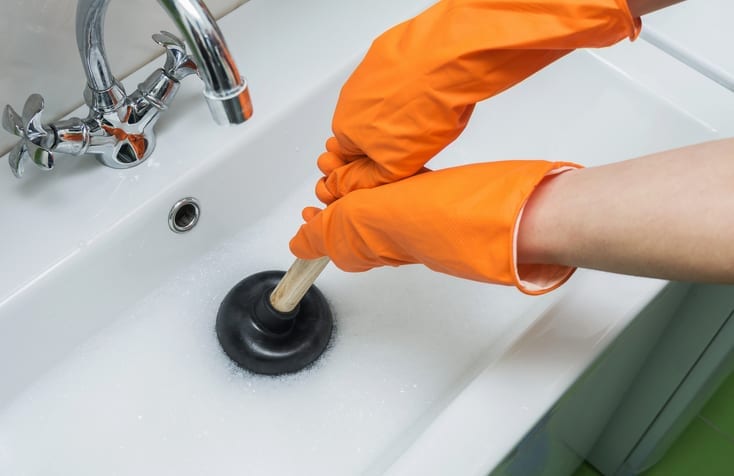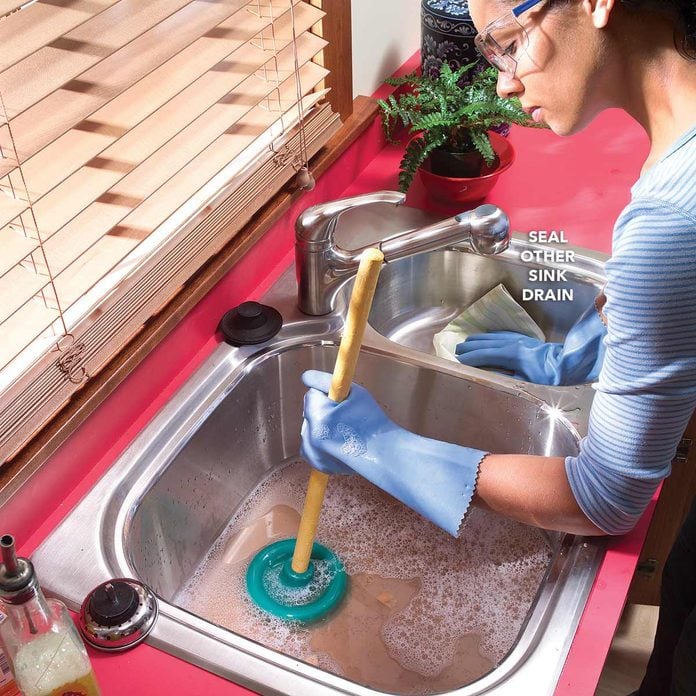Efficient Plungers and Drain Cleaner Techniques: Top Guidelines
Efficient Plungers and Drain Cleaner Techniques: Top Guidelines
Blog Article
The writer is making a few great points relating to Tips on How to Effectively Use a Plunger as a whole in this article down the page.

Introduction
Correct upkeep of family drains is important for stopping blockages and making sure smooth water flow. One of the secret tools in every home owner's toolkit is the plunger, alongside numerous drainpipe cleaners developed to take on stubborn clogs efficiently. This post discovers just how to make use of plungers and drain cleansers effectively to keep your drains moving easily.
Section 1: Understanding Bettors
Sorts of Plungers
There are several types of bettors offered, each made for different types of drains and blocks. The most usual kinds consist of mug bettors, flange plungers, and accordion plungers.
Just How Plungers Work
Plungers deal with the concept of developing stress and suction to displace clogs. When effectively applied over a drainpipe, they develop a vacuum that can take out particles or break up clogs.
Picking the Right Bettor
Choosing the right bettor depends upon the type of drain and the nature of the blockage. Cup plungers are perfect for sinks and bathtubs, while flange plungers are much better matched for commodes because of their design.
Typical Mistakes with Bettors
Avoiding these errors makes certain efficient plunging: inappropriate seal around the drainpipe, insufficient pressure, and unclear bordering particles.
Area 2: Making Use Of Plungers Successfully
Preparation
Prior to diving, make certain the bettor covers the drainpipe entirely and forms a tight seal. Clear any type of noticeable debris around the drain opening.
Strategy
Beginning with mild diving movements to develop suction. Boost stress gradually, using a constant rhythm. Repeat as required till the drainpipe clears.
Troubleshooting Tips
If diving does not work, try readjusting the seal, using petroleum jelly for a better seal, or making use of a different sort of plunger.
Area 3: Comprehending Drainpipe Cleansers
Sorts Of Drain Cleaners
Drain pipes cleansers can be chemical or enzymatic. Chemical cleansers use solid chemicals to dissolve blockages, while chemical cleaners utilize all-natural enzymes to break down organic matter.
Exactly How Drainpipe Cleaning Company Work
Chemical cleaners react with blockages to dissolve them, while chemical cleansers break down natural materials like hair and grease without hurting pipes.
Safety and security Factors to consider
Constantly put on gloves and eye security when making use of chemical drain cleansers. Guarantee ample air flow and comply with supplier directions thoroughly.
Eco-Friendly Alternatives
Consider utilizing vinegar and baking soft drink or enzyme-based cleaners for green alternatives that are safer for pipes and the environment.
Area 4: Utilizing Drainpipe Cleansers Properly
Application Techniques
Pour chemical cleansers directly right into the drainpipe opening. Enable them to benefit the suggested time prior to flushing with warm water. Enzymatic cleansers ought to rest overnight.
Preventative measures
Avoid mixing various types of cleansers, as this can produce harmful fumes. Never ever make use of chemical cleaners together with a bettor, as splashing can occur.
Taking Care Of Persistent Clogs
For persistent clogs, think about utilizing a plumbing serpent or calling a specialist plumber to prevent damages to pipelines.
Verdict
Finally, recognizing exactly how to utilize plungers and drainpipe cleansers properly is vital for preserving healthy plumbing systems. By selecting the right devices and strategies, house owners can tackle minor blockages and avoid major pipes issues down the line.
4 DIY Ways to Unclog Drains
Wire Hanger
This age-old technique has been used by many an amateur plumber – to much success. Take any wire hanger, deconstruct its shape and leave a small hook shape on the end. Time to go fishing! Remove the shower or sink drain cover and snake the wire into the drain, wiggling and rotating it as you push it through. Dispose of the gunk that you remove and flush the drain with hot water. Rinse with a pan of boiling water for best results.
Plunger
Creating a suction in your drain can break up clogs caused by hair and soap residue build up. First, make sure you are using the correct type of plunger, one specifically for sinks or tubs. They are typically smaller than regular toilet plungers and often have a shallow suction cup. Regular plungers can work too but we’d recommend cleaning them first and finding a way to create better suction over the drain.
Baking Soda and Vinegar
This technique is a classic – and one of the most popular DIY drain unclog methods. Pour one cup of baking soda and one cup of vinegar down the drain and allow it to work its magic overnight. The next morning, flush the drain with boiling water. Repeat if necessary.
Drain Snake/Hair Clog Tool
If you know your clog is caused primary by hair, a drain snake/hair clog tool might be your best option. These tools can be purchased for under $10 at any hardware store and work well so long as the clog isn’t too deep in the drain.
https://www.callcatons.com/blog/four-diy-ways-to-unclog-drains/

Application Techniques
Pour chemical cleansers directly right into the drainpipe opening. Enable them to benefit the suggested time prior to flushing with warm water. Enzymatic cleansers ought to rest overnight.
Preventative measures
Avoid mixing various types of cleansers, as this can produce harmful fumes. Never ever make use of chemical cleaners together with a bettor, as splashing can occur.
Taking Care Of Persistent Clogs
For persistent clogs, think about utilizing a plumbing serpent or calling a specialist plumber to prevent damages to pipelines.
Verdict
Finally, recognizing exactly how to utilize plungers and drainpipe cleansers properly is vital for preserving healthy plumbing systems. By selecting the right devices and strategies, house owners can tackle minor blockages and avoid major pipes issues down the line.
4 DIY Ways to Unclog Drains
Wire Hanger
This age-old technique has been used by many an amateur plumber – to much success. Take any wire hanger, deconstruct its shape and leave a small hook shape on the end. Time to go fishing! Remove the shower or sink drain cover and snake the wire into the drain, wiggling and rotating it as you push it through. Dispose of the gunk that you remove and flush the drain with hot water. Rinse with a pan of boiling water for best results.
Plunger
Creating a suction in your drain can break up clogs caused by hair and soap residue build up. First, make sure you are using the correct type of plunger, one specifically for sinks or tubs. They are typically smaller than regular toilet plungers and often have a shallow suction cup. Regular plungers can work too but we’d recommend cleaning them first and finding a way to create better suction over the drain.
Baking Soda and Vinegar
This technique is a classic – and one of the most popular DIY drain unclog methods. Pour one cup of baking soda and one cup of vinegar down the drain and allow it to work its magic overnight. The next morning, flush the drain with boiling water. Repeat if necessary.
Drain Snake/Hair Clog Tool
If you know your clog is caused primary by hair, a drain snake/hair clog tool might be your best option. These tools can be purchased for under $10 at any hardware store and work well so long as the clog isn’t too deep in the drain.
https://www.callcatons.com/blog/four-diy-ways-to-unclog-drains/

I'm very eager about Here's How to Correctly Use a Toilet Plunger and I hope you enjoyed reading my page. Are you aware of someone else who is interested in Here's How to Correctly Use a Toilet Plunger? Why not share it. Thank-you for going through it.
Click Here Report this page